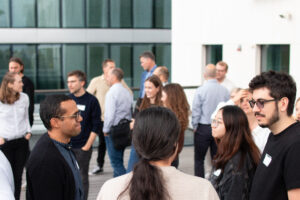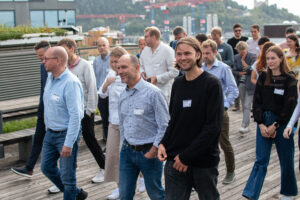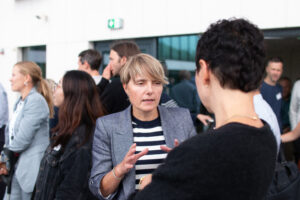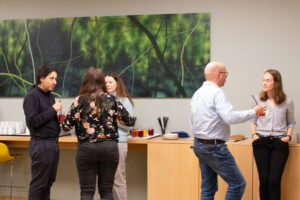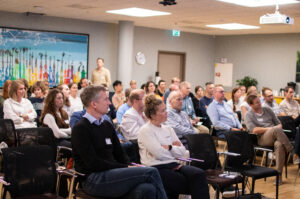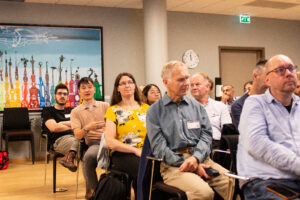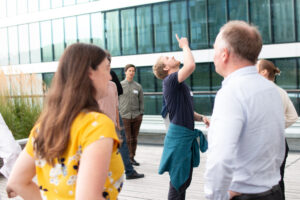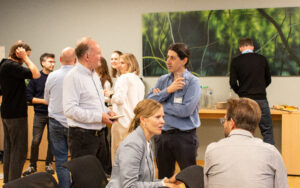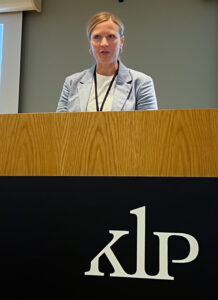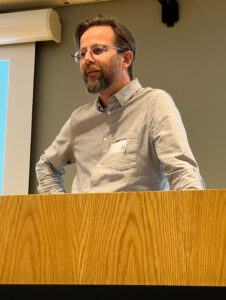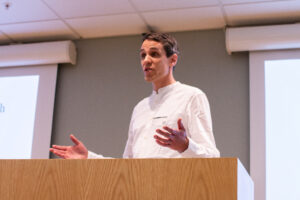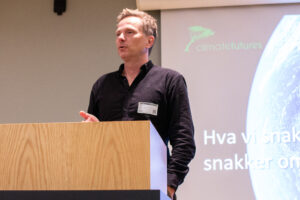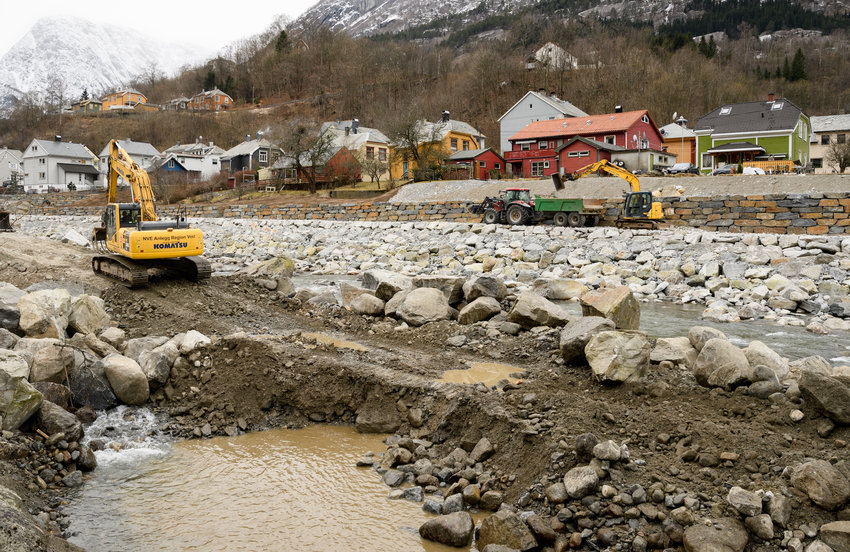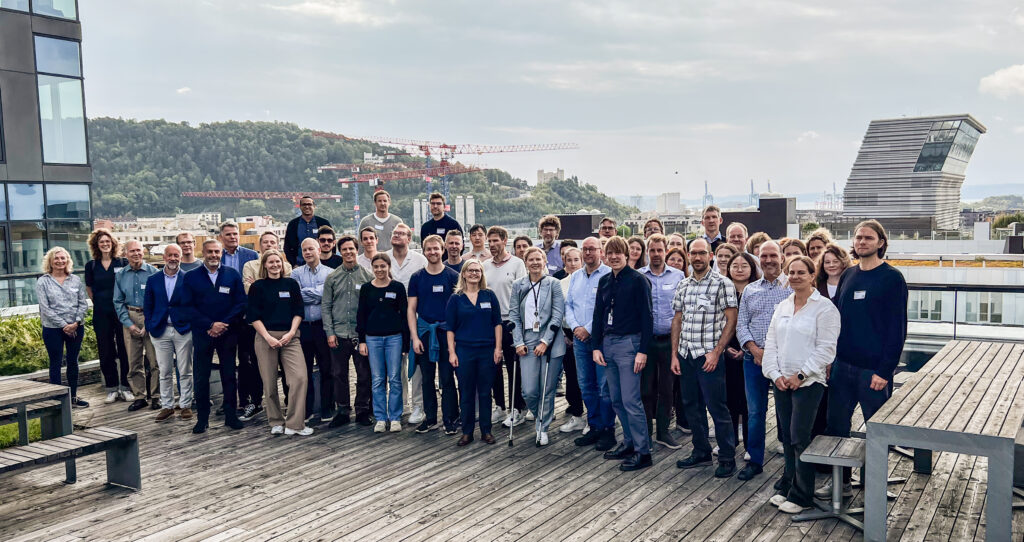
Climate Futures is halfway through its funding period, and Chair Heidi Finskas of KLP is pleased to represent an SFI that is performing well, with a high activity level and many partners.
– After the extreme weather event ‘Hans’, more and more people became aware of the need to invest in tailored solutions to address extreme weather. The pilot projects within Climate Futures are beginning to deliver results. We need to build on these pilots, test more, and further develop them, she said at the opening of the general meeting in Oslo on August 28.
One example is the 21-day forecast on Yr, which became a success this summer with 800,000 weekly users. The forecast was developed by Climate Futures in collaboration with the Norwegian Meteorological Institute and NRK.
– Innovation is not an off-the-shelf product, but a breakthrough can lead to more innovations. The 21-day forecast is now being used in other solutions we are working on, said Øyvind Paasche, the Centre Director.
Paasche is very pleased that as many as 73 % of those who use the forecast say it is easy to understand. It is a goal that the center creates products that benefit society. Therefore, the work in the SFI is divided into various ‘nodes’: Sustainable Food Production – Aquaculture, Sustainable Food Production – Agriculture, Renewable Energy, Smart Shipping, and Resilient Societies.
Several of the projects the nodes are working on were presented at the meeting:
- The Effect of Information and Experience on Demand for Extreme Weather Insurance (Endre Kildal Iversen, SNF)
- Weather-Based Crop Forecasts for Norwegian Fruit (Nora Røhnebæk Aasen, NR)
- Predicting waiting times in the Panama Canal (Gabriel Fuentes, NHH)
- «Melkeværet» – Serious game for agriculture (Ingrid Vigna, MET)
- Can weather forecasts predict Norwegian Home Insurance claims? (Etienne Dunn-Sigouin, NORCE)
- Forecasting energy production for small-scale hydropower (Ole Wulff, NORCE)
- Characterising Marine Heatwaves in the Arctic Region (Marianne Williams-Kerslake, NERSC)
- Linking large-scale precursors to summertime persistent dry days over Norway (Hsin-Yu Chu, UiB)
Keynotes
Jørn Kristiansen from MET was invited to talk about how MET uses machine learning to train models. Tine Louise Trøen from Eviny discussed an environmentally friendly energy mix and how it affects the market.
There were also talks from Noel Keenlyside (UiB), who presented how to combine different models into ‘supermodels’. Erik Kolstad (NORCE) explained what a seasonal forecast is and how it is structured, while Geir Drage Berentsen from NHH spoke about how wind power and solar energy can complement each other in different seasons.
Panel Discussion on Climate Change and Food Security
In his introduction to the discussion on climate change and food security, Arne Bardalen (NIBIO) explained that 60% of the food in Norway is imported. The self-sufficiency rate in 2021 was 46%, and the Auditor General has stated that we are not well-prepared for a food crisis. Joining him on the panel were Anne Skuterud (Total Preparedness Commission) and Manuel Hempel (NORCE), while Gjermund Grimsby (KLP) chaired the debate. A report from the Total Preparedness Commission has stated that ‘no one’ can answer how good our preparedness is or describe our capacity for adaptation. Skuterud emphasized that we must make the most of the conditions we have. Various measures to increase the robustness of Norwegian agriculture (precision farming, better drainage, and proper fertilization) are being considered. The growing season has been longer in recent years. We can produce more Norwegian food. At the same time, dietary recommendations somewhat contradict what we have the conditions to produce in Norway. Is this sustainable?
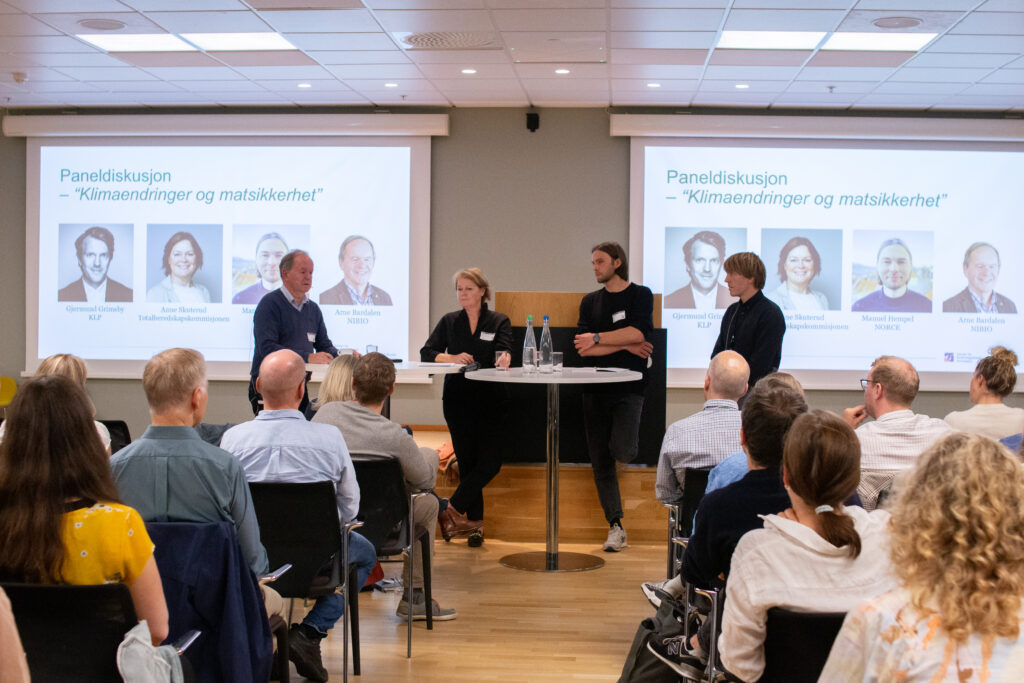
Climate Futures is a Centre for Research-based Innovation (SFI) coordinated by NORCE.
The center works broadly, collaborating with nearly 40 partners from academia, industry, administration, and interest organizations. The projects span sectors particularly vulnerable to climate risk, such as aquaculture, agriculture, shipping, and energy, in addition to societal structures.
